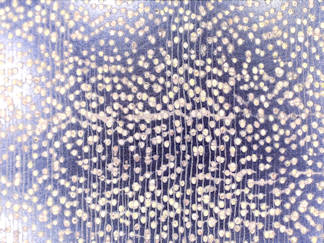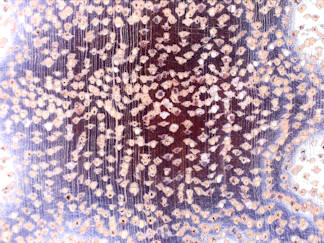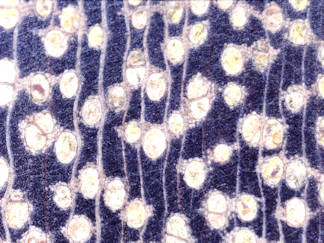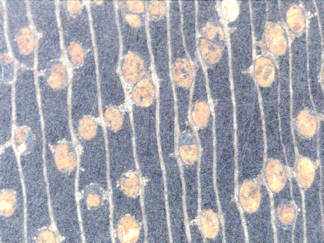| to see all species with links to their anatomy page go here: species links |
|
Group 1a: weak rays
pores small to uncountable, rays barely visible (or not visible) even at 10X |
%201.jpg)
%201.jpg)
%202.jpg)
%201.jpg)
%201.jpg)
%201.jpg)
%202.jpg)
%201.jpg)
%202.jpg)
%201.jpg)
%202.jpg)
.jpg)
.jpg)
%201.jpg)
%202.jpg)
%201.jpg)
%202.jpg)
%201.jpg)
%201.jpg)
%202.jpg)
.jpg)
%201.jpg)
%202.jpg)
%201.jpg)
%202.jpg)
%203.jpg)
%201.jpg)
%202.jpg)
.jpg)
.jpg)
.jpg)
%201.jpg)
%202%20heartwood.jpg)
%202%20sapwood.jpg)
.jpg)
.jpg)
%201.jpg)
%201.jpg)
%202.jpg)
%203.jpg)
%201.jpg)
%201.jpg)
%201.jpg)
%202.jpg)
%203.jpg)
%201.jpg)
%201.jpg)
%202.jpg)
%201.jpg)
%202.jpg)
%203.jpg)
%204.jpg)
%205.jpg)
%201.jpg)
%202.jpg)
%201.jpg)
%202.jpg)
%203.jpg)
%204.jpg)
%201.jpg)
%202.jpg)
%203.jpg)
%201.jpg)
%202.jpg)
%201.jpg)
%201.jpg)
%202.jpg)
%203.jpg)
%204.jpg)
%205.jpg)
%206.jpg)
%207.jpg)
.jpg)
%201%20heartwood.jpg)
%201%20sapwood.jpg)
.jpg)
.jpg)
%201.jpg)
%202.jpg)
%203.jpg)
%201.jpg)
%202.jpg)
%203.jpg)
%204.jpg)
%205.jpg)
%201.jpg)
%202.jpg)
%203.jpg)
%204.jpg)
%20heartwood.jpg)
%20sapwood.jpg)
%201.jpg)
%202.jpg)
%201.jpg)
%201.jpg)
%201.jpg)
%201%20heartwood.jpg)
%201%20sapwood.jpg)
%202.jpg)
%201.jpg)
%201.jpg)
%201.jpg)
|
Group 1b: stronger rays
pores small, rays visible at 10X but not to the naked eye growth boundaries generally vague |
%201.jpg)
%202.jpg)
%203.jpg)
%204.jpg)
%205.jpg)
%201.jpg)
%202.jpg)
%203.jpg)
%201.jpg)
%202.jpg)
%203.jpg)
%204.jpg)
%205.jpg)
%206.jpg)
%201.jpg)
%202.jpg)
%203.jpg)
%201.jpg)
%203.jpg)
.jpg)
.jpg)
%201.jpg)
%201a.jpg)
%201b.jpg)
%201.jpg)
%201.jpg)
%202.jpg)
%203.jpg)
%204.jpg)
.jpg)
.jpg)
%201.jpg)
%202.jpg)
%203.jpg)
%204.jpg)
%205.jpg)
%201.jpg)
%202.jpg)
%201.jpg)
%201.jpg)
%202.jpg)
%203.jpg)
%201%20heartwood.jpg)
%201%20sapwood.jpg)
%202.jpg)
%203.jpg)
%204.jpg)
%205.jpg)
%206a.jpg)
%206b.jpg)
%207a.jpg)
%207b.jpg)
%201%20heartwood.jpg)
%201%20sapwood.jpg)
%201.jpg)
%201.jpg)
%202.jpg)
%204.jpg)
%205.jpg)
%203.jpg)
%201.jpg)
.jpg)
%201a.jpg)
%201b.jpg)
%201.jpg)
%202.jpg)
%201.jpg)
%202.jpg)
.jpg)
.jpg)
%201.jpg)
%202.jpg)
.jpg)
%201a.jpg)
%201b.jpg)
%201%20sapwood.jpg)
%201.jpg)
%202.jpg)
%201.jpg)
%201.jpg)
%202.jpg)
%203.jpg)
%204.jpg)
%205.jpg)
%201.jpg)
%201.jpg)
|
Group 1c: sparser pores
moderately sparse pores, most with vasicentric parenchyma, rays clearly visible at 10X |
%201.jpg)
%201.jpg)
%201.jpg)
%202.jpg)
%203.jpg)
%204.jpg)
%201.jpg)
%202.jpg)
%203.jpg)
%204.jpg)
.jpg)
%201.jpg)
%202.jpg)
%201.jpg)
%202.jpg)
%203.jpg)
%204.jpg)
%205.jpg)
%201.jpg)
%202.jpg)
%203.jpg)
%201.jpg)
%202.jpg)
%203.jpg)
%204.jpg)
%205%20heartwood.jpg)
%205%20sapwood.jpg)
%206.jpg)
%201.jpg)
%202.jpg)
%203.jpg)
%201.jpg)
%20heartwood.jpg)
%20sapwood.jpg)
%201.jpg)
%201.jpg)
%202.jpg)
%203.jpg)
%204.jpg)
%201.jpg)
%202.jpg)
%201.jpg)
.jpg)
.jpg)
.jpg)
.jpg)
.jpg)
%201.jpg)
%202.jpg)
%201.jpg)
%202.jpg)
%201.jpg)
%202.jpg)
%203.jpg)
.jpg)
.jpg)
.jpg)
%201a.jpg)
%201b.jpg)
%201.jpg)
%201a.jpg)
%201b.jpg)
.jpg)
.jpg)
%201.jpg)
%201.jpg)
%202.jpg)
%203.jpg)
%204.jpg)
%205a.jpg)
%205b.jpg)
%201.jpg)
%202.jpg)
%203.jpg)
%204.jpg)
%201.jpg)
%202.jpg)
%203.jpg)
%204.jpg)
%201.jpg)
%202.jpg)
%201a.jpg)
%201b.jpg)
%201c.jpg)
%20heartwood.jpg)
%20sapwood.jpg)
%201.jpg)
%202.jpg)
%203.jpg)
%201.jpg)
%202.jpg)
%203.jpg)
.jpg)
%20quartersawn.jpg)
%201.jpg)
|
Group 1d: very sparse pores
very sparse pores, some species have vasicentric parenchyma, rays barely visible at 10X |
%201.jpg)
%202.jpg)
%203.jpg)
%204.jpg)
%201.jpg)
%201.jpg)
%202.jpg)
%203.jpg)
%201.jpg)
%203.jpg)
.jpg)
%201.jpg)
%201.jpg)
%202.jpg)
.jpg)
.jpg)
.jpg)
.jpg)
%202.jpg)
.jpg)
%201.jpg)
%202.jpg)
%201.jpg)
%202.jpg)
%201.jpg)
%201.jpg)
%202.jpg)
%201.jpg)
%201%20heartwood.jpg)
%201%20sapwood.jpg)
|
Group 1e: pore multiples
pore multiples, some w/ rays visible at 10X, growth ring boundaries vague |
%201.jpg)
%202.jpg)
%203.jpg)
%204.jpg)
%201.jpg)
%202.jpg)
%203.jpg)
.jpg)
%201%20heartwood.jpg)
%201%20sapwood.jpg)
%201.jpg)
%202.jpg)
.jpg)
%201.jpg)
%201.jpg)
%201.jpg)
%202.jpg)
%203.jpg)
.jpg)
.jpg)
.jpg)
|
Group 1f: vasicentric parenchyma around large, sparse pores
relatively large pores easily visible with a hand 10X lens, often in doubles or even more vasicentric parenchyma with some groups lozenge-shaped aliform and some with short confluent groups, growth rings are not obvious except for canary, the rays are easily visible with a 10X loupe but not with the naked eye |
%201.jpg)
%202.jpg)
.jpg)
%201.jpg)
%202.jpg)
%203.jpg)
%205.jpg)
%206.jpg)
%204.jpg)
%207.jpg)
%208a.jpg)
%208b.jpg)
%209.jpg)
%2010a.jpg)
%2010b.jpg)
%201.jpg)
.jpg)
.jpg)
.jpg)
%201.jpg)
%202.jpg)
%203.jpg)
%201.jpg)
%202.jpg)
.jpg)
.jpg)
.jpg)
%201.jpg)
%201.jpg)
%202.jpg)
%203.jpg)
%201.jpg)
%202.jpg)
%201.jpg)
%202.jpg)
%201.jpg)
%202.jpg)
%201.jpg)
%202a.jpg)
%202b.jpg)
%201a.jpg)
%201b.jpg)
%202.jpg)
%203.jpg)
.jpg)
%201.jpg)
%202.jpg)
%201.jpg)
%202.jpg)
%203.jpg)
.jpg)
%201.jpg)
%202.jpg)
%201.jpg)
%202.jpg)
%201.jpg)
%202.jpg)
%203.jpg)
%204.jpg)
%201.jpg)
%202.jpg)
%203.jpg)
%204.jpg)
.jpg)
%201.jpg)
%202.jpg)
%201.jpg)
%203.jpg)
%204.jpg)
%201.jpg)
.jpg)
%201.jpg)
%202.jpg)
%201.jpg)
%202.jpg)
%201a.jpg)
%201b.jpg)
.jpg)
%201a.jpg)
%201b.jpg)
%201.jpg)
%202.jpg)
%201a.jpg)
%201b.jpg)
%201.jpg)
%202.jpg)
%201%20sapwood.jpg)
%201%20heartwood.jpg)
%202.jpg)
%203.jpg)
%204.jpg)
%201.jpg)
%202.jpg)
%205a.jpg)
%205b.jpg)
.jpg)
%202.jpg)
.jpg)
%201%20heartwood.jpg)
%201%20sapwood.jpg)
%201a.jpg)
%201b.jpg)
%201c.jpg)
.jpg)
.jpg)
.jpg)
.jpg)
%201.jpg)
%201.jpg)
%202.jpg)
|
Group 1g: pore multiples, vasicentric parenchyma,
and some of these have faint banded parenchyma like those in group 2b pore multiples, vasicentric parenchyma some in this group have rays visible at 10X some in this group have faint banded parenchyma |
%201.jpg)
%202.jpg)
%201%20heartwood.jpg)
%201%20second%20shot.jpg)
%201%20sapwood.jpg)
%202%20heartwood.jpg)
%202%20sapwood.jpg)
%203a.jpg)
%203b.jpg)
%204a.jpg)
%204b.jpg)
%205.jpg)
%206.jpg)
%207.jpg)
%208.jpg)
%209.jpg)
%201.jpg)
%202.jpg)
%203.jpg)
.jpg)
%201.jpg)
%202.jpg)
%203.jpg)
%204.jpg)
%201.jpg)
%202.jpg)
%205.jpg)
%203.jpg)
%204.jpg)
%201.jpg)
%202.jpg)
%203.jpg)
%204a.jpg)
%204b.jpg)
|
Group 1h: tangential pore bands and strong rays
pores are small and mostly in tangential bands and with vasicentric parenchyma very plentiful strong rays, clearly visible with a 10X loupe but not necessarily the naked eye growth ring boundaries are present but weak |
%201.jpg)
%202.jpg)
%201%20sapwood.jpg)
%202%20sapwood.jpg)
%202%20heartwood.jpg)
%201.jpg)
%202.jpg)
%203.jpg)
|
Group 1i: tiny to uncountable pores
pores are tiny to uncountable, rays generally not visible even at 10X growth ring boundaries visible but sometimes quite weak |
%201.jpg)
%202.jpg)
%201.jpg)
%201a.jpg)
%201b.jpg)
%201.jpg)
%202.jpg)
%201.jpg)
%201.jpg)
%201.jpg)
%201.jpg)
%201.jpg)
%202.jpg)
%203.jpg)
%204.jpg)
%20sapwood.jpg)
%20sapwood.jpg)
%201.jpg)
%201.jpg)
.jpg)
%201.jpg)
%202.jpg)
%203.jpg)
%204.jpg)
%201.jpg)
%202.jpg)
%201.jpg)
%202%20heartwood.jpg)
%202%20sapwood.jpg)
%203.jpg)
%201.jpg)
%201.jpg)
%201.jpg)
%202.jpg)
%203.jpg)
%201%20heartwood.jpg)
%201%20sapwood.jpg)
.jpg)
%201.jpg)
%202a.jpg)
%202b.jpg)
|
Group 2a: obvious banded parenchyma
sparse pores with banded parenchyma (occasionally with breaks) growth ring boundaries obscure may have faint rays visible with 10X loupe but not with the naked eye |
%201.jpg)
%202a.jpg)
%202b.jpg)
%201.jpg)
%202.jpg)
%201%20heartwood.jpg)
%201%20sapwood.jpg)
%202.jpg)
%203.jpg)
%204.jpg)
%205 heartwood.jpg)
%205%20sapwood.jpg)
%201a.jpg)
%201b.jpg)
%201.jpg)
%201.jpg)
%201.jpg)
%202.jpg)
%201.jpg)
|
Group 2b: faint banded parenchyma
banded parenchyma that will be visible with a 10X loupe but only if you do a very good job of cleaning up the end grain most of these have pores in radial groups and many have pore multiples |
.jpg)
.jpg)
%201.jpg)
%202.jpg)
%203.jpg)
%204.jpg)
%205.jpg)
%201.jpg)
%202.jpg)
%201.jpg)
%202.jpg)
%203.jpg)
%201.jpg)
%202.jpg)
%203.jpg)
%201.jpg)
%202.jpg)
%203.jpg)
.jpg)
%201.jpg)
%202.jpg)
%203.jpg)
%204a.jpg)
%204b.jpg)
.jpg)
%201.jpg)
%202.jpg)
%201.jpg)
%201.jpg)
%202.jpg)
%202a.jpg)
%202b.jpg)
%201.jpg)
%202.jpg)
%203.jpg)
%201.jpg)
%202.jpg)
%201.jpg)
%202.jpg)
%203a.jpg)
%203b.jpg)
%201.jpg)
%202.jpg)
%201.jpg)
.jpg)
%201.jpg)
%201.jpg)
.jpg)
%201.jpg)
%202.jpg)
%203.jpg)
.jpg)
.jpg)
|
Group 2c: broken parenchyma bands
sparse pores with vasicentric parenchyma and broken bands of parenchyma growth rings are vague/obscure, rays obvious at 10X |
.jpg)
%201.jpg)
%201.jpg)
%202.jpg)
%203a.jpg)
%203b.jpg)
%201.jpg)
%202.jpg)
.jpg)
%201.jpg)
%202.jpg)
%203.jpg)
%204.jpg)
%205.jpg)
%201.jpg)
%202.jpg)
%201a.jpg)
%201b.jpg)
|
Group 3a: strong rays and scaliform or reticulate parenchyma
very strong, thick rays (width extremely variable), visible to the naked eye and with obvious scalariform or reticulate parenchyma, no visible ring boundaries (silky oak and sheoak have vague ones) |
%201.jpg)
%202.jpg)
%203.jpg)
%201.jpg)
%202.jpg)
%203.jpg)
%201.jpg)
%202.jpg)
%203.jpg)
%204a.jpg)
%204b.jpg)
%205.jpg)
%206.jpg)
.jpg)
.jpg)
%201.jpg)
%201.jpg)
%202.jpg)
.jpg)
.jpg)
.jpg)
%201%20heartwood.jpg)
%201%20sapwood.jpg)
%202.jpg)
%203.jpg)
%204.jpg)
%201%20heartwood.jpg)
%201%20sapwood.jpg)
%201.jpg)
%202.jpg)
%201.jpg)
.jpg)
%201.jpg)
.jpg)
.jpg)
.jpg)
.jpg)
.jpg)
%201.jpg)
%202.jpg)
.jpg)
%201.jpg)
.jpg)
%201.jpg)
%201%20heartwood.jpg)
%201%20sapwood.jpg)
%201.jpg)
%202.jpg)
|
Group 3b: strong rays
very strong, thick rays, visible to the naked eye growth ring boundaries are vague |
%201.jpg)
%202.jpg)
%201.jpg)
%202.jpg)
|
Group 4a: aliform parenchyma, strong lozenge shaped
sparse pores with large, obvious groups of lozenge-shaped aliform parenchyma, with some occasional wing-shaped ones, occasional confluence but no heavy confluence rays that have varying degrees of visibility with a 10X loupe but not visible to the naked eye ring boundaries not always obvious but some of these (as noted below) have marginal parenchyma that is visible with a 10X loupe |
%201.jpg)
%202.jpg)
%203.jpg)
%204.jpg)
.jpg)
%201.jpg)
%202.jpg)
%201.jpg)
%201.jpg)
%201.jpg)
%201.jpg)
.jpg)
%201.jpg)
%202.jpg)
%203.jpg)
%204.jpg)
%205.jpg)
.jpg)
.jpg)
%201.jpg)
%202.jpg)
%203.jpg)
%204.jpg)
%205a.jpg)
%205b.jpg)
%206a.jpg)
%206b.jpg)
%201.jpg)
%202.jpg)
%203.jpg)
%201.jpg)
%202.jpg)
%203.jpg)
%204.jpg)
%205.jpg)
%201.jpg)
%202.jpg)
%203.jpg)
%204.jpg)
%205.jpg)
%206.jpg)
%201.jpg)
%202.jpg)
%203.jpg)
%202a.jpg)
%202b.jpg)
%203a.jpg)
%203b.jpg)
%201.jpg)
%201.jpg)
%202.jpg)
%204.jpg)
%201.jpg)
%201.jpg)
%202a.jpg)
%202b.jpg)
.jpg)
%201.jpg)
%202.jpg)
%203.jpg)
%201.jpg)
%201.jpg)
%201.jpg)
%201.jpg)
%202.jpg)
%203.jpg)
%204.jpg)
%205.jpg)
%206.jpg)
%207.jpg)
%208a.jpg)
%208b.jpg)
%209.jpg)
%2010a.jpg)
%2010b.jpg)
%2011.jpg)
%2012.jpg)
%2013.jpg)
.jpg)
%201.jpg)
.jpg)
%201.jpg)
%202.jpg)
%203.jpg)
%204a.jpg)
%204b.jpg)
%205a.jpg)
%205b.jpg)
%201.jpg)
%202.jpg)
%201.jpg)
%202.jpg)
%201a.jpg)
%201b.jpg)
%202.jpg)
%203.jpg)
%201.jpg)
%201%20heartwood.jpg)
%201%20sapwood.jpg)
%202.jpg)
%203.jpg)
%204.jpg)
%205a.jpg)
%205b.jpg)
|
Group 4b: aliform parenchyma, lozenge shaped and confluent
sparse or moderately sparse pores with lozenge-shaped aliform parenchyma growth ring boundaries are marked by marginal parenchyma which are usually only visible with a 10X loupe (but in jatoba may be visible to the naked eye) plentiful rays easily visible with a 10X loupe but not to the naked eye |
%201a.jpg)
%201b.jpg)
%202.jpg)
%201.jpg)
%202.jpg)
%201a.jpg)
%201b.jpg)
%201.jpg)
%202.jpg)
%203.jpg)
%204.jpg)
%205.jpg)
%206.jpg)
%207.jpg)
%208.jpg)
%209.jpg)
%2010a.jpg)
%2010b.jpg)
%2011a.jpg)
%2011b.jpg)
%2012a.jpg)
%2012b.jpg)
%201a.jpg)
%201b.jpg)
%201.jpg)
%201.jpg)
%201.jpg)
%201.jpg)
%20(hymenaea%20courbaril)%202a.jpg)
%20(hymenaea%20courbaril)%202b.jpg)
%201.jpg)
%202.jpg)
%203.jpg)
%204.jpg)
%205.jpg)
%206a.jpg)
%206b.jpg)
%207a.jpg)
%207b.jpg)
%208a.jpg)
%208b.jpg)
%201.jpg)
%202.jpg)
%203.jpg)
%204.jpg)
%205.jpg)
%206.jpg)
%207.jpg)
%201.jpg)
%208.jpg)
%209.jpg)
%2010a.jpg)
%2010b.jpg)
%201.jpg)
%202.jpg)
%203.jpg)
%201.jpg)
|
Group 4c: aliform parenchyma, wing- and lozenge-shaped
moderately sparse pores with lozenge- and wing-shaped aliform parenchyma growth ring boundaries are vague/obscure plentiful rays visible with a 10X loupe but not to the naked eye |
%201.jpg)
%202.jpg)
%203.jpg)
%204.jpg)
.jpg)
%201.jpg)
%202.jpg)
%203.jpg)
%201.jpg)
%201.jpg)
.jpg)
%201.jpg)
%201.jpg)
%201.jpg)
%202.jpg)
%203.jpg)
%204.jpg)
%205.jpg)
%201.jpg)
%202.jpg)
%201.jpg)
%202.jpg)
%201.jpg)
%202.jpg)
%203.jpg)
%204.jpg)
%205.jpg)
%201.jpg)
%201a.jpg)
%201b.jpg)
|
Group 4d: aliform parenchyma, sparse wing shaped
fairly sparse pores with faint winged aliform parenchyma some of these have rays that should be visible with a 10X loupe none have rays that would be visible to the naked eye ring boundaries visible to the naked eye but not always obvious |
%201.jpg)
%202.jpg)
%203.jpg)
%201.jpg)
%201.jpg)
%202.jpg)
%203.jpg)
%201.jpg)
%202.jpg)
%201%20heartwood.jpg)
%201%20sapwood.jpg)
%202.jpg)
%203.jpg)
%201.jpg)
%202.jpg)
%203.jpg)
%204.jpg)
%201.jpg)
.jpg)
.jpg)
%201.jpg)
%201a.jpg)
%201b.jpg)
%201a.jpg)
%201b.jpg)
%201a.jpg)
%201b.jpg)
%201.jpg)
%202.jpg)
.jpg)
%201.jpg)
%201.jpg)
%202.jpg)
%203.jpg)
%201.jpg)
%202.jpg)
.jpg)
%201.jpg)
%202.jpg)
%203.jpg)
%201.jpg)
%201.jpg)
%202.jpg)
%203.jpg)
%204.jpg)
%205.jpg)
.jpg)
%201.jpg)
%202.jpg)
%203.jpg)
.jpg)
.jpg)
%201.jpg)
%202.jpg)
%203.jpg)
%204.jpg)
%205.jpg)
|
Group 4e: wing shaped aliform parenchyma, some with thin confluent parenchyma bands pores sparse with wing shaped aliform parenchyma, often connecting several pores growth rings usually very hard to distinguish rays are present but not visible or barely visible and only with a 10X loupe |
%201.jpg)
%204.jpg)
%202.jpg)
%203.jpg)
%205.jpg)
%206.jpg)
%207.jpg)
%208.jpg)
%209.jpg)
%2010.jpg)
%2012%20heartwood.jpg)
%2012%20sapwood.jpg)
%2011%20heartwood.jpg)
%2011%20transition.jpg)
%2011%20sapwood.jpg)
.jpg)
.jpg)
%201.jpg)
%202.jpg)
%201a.jpg)
%201b.jpg)
%201.jpg)
%202.jpg)
%204.jpg)
%203%20heartwood.jpg)
%203%20sapwood.jpg)
%205.jpg)
%201.jpg)
%202.jpg)
.jpg)
%201.jpg)
%202.jpg)
|
Group 4f: reticulate parenchyma (not scaliform)
very sparse pores and heavy reticulate parenchyma growth ring boundaries are fairly clear due to marginal parenchyma and slight color darkening at the boundary rays very obvious at 10X and visible with the naked eye |
%201a.jpg)
%201b.jpg)
%202.jpg)
%201a.jpg)
%201b.jpg)
%201c.jpg)
|
Group 5: confluent parenchyma
spare pores with obvious bands of confluent parenchyma may have rays visible with a 10X loupe but none visible with the naked eye growth ring boundaries not clear |
%201.jpg)
%202.jpg)
.jpg)
.jpg)
%201.jpg)
%202.jpg)
%203.jpg)
%204a.jpg)
%204b.jpg)
%204c.jpg)
%201.jpg)
%202.jpg)
%201.jpg)
%202.jpg)
%201.jpg)
%202.jpg)
%205.jpg)
%203.jpg)
%204.jpg)
%206.jpg)
%207%20heartwood.jpg)
%207%20sapwood.jpg)
%208.jpg)
%20sapwood%201.jpg)
.jpg)
%201a.jpg)
%201b.jpg)
%202.jpg)
%203.jpg)
%204.jpg)
%205.jpg)
%206.jpg)
%207.jpg)
%208.jpg)
%209.jpg)
%2010.jpg)
%2011%20heartwood.jpg)
%2011%20sapwood.jpg)
%20laminated%201a.jpg)
%20laminated%201b.jpg)
%201.jpg)
%202.jpg)
.jpg)
|
Group 6: dendritic pore groups, vague ring boundaries
pores small, numerous, and in radial multiples, generally in dendritic groups, growth rings very faint, just barely visible to the naked eye, rays present but generally not visible even with a 10X loupe |
%201.jpg)
%202.jpg)
%203.jpg)
.jpg)
%201a.jpg)
%201b.jpg)
%201.jpg)
%202.jpg)
%203.jpg)
%204.jpg)
%205.jpg)
|
Group 7: dendritic pore groups, strong ring boundaries
pores in dendritic groups, growth rings very faint, just barely visible to the naked eye, rays present but generally not visible even with a 10X loupe |
%201a%20400%20grit.jpg)
%201b%20400%20grit.jpg)
.jpg)
.jpg)
%201%20heartwood.jpg)
%201%20sapwood.jpg)
|
Group 8: all the rest
I did not feel that I could shoehorn these into any of the other categories on this page |
%201.jpg)
%202.jpg)
%201a.jpg)
%201b.jpg)
%201.jpg)
%201.jpg)
%201.jpg)
%201.jpg)
%201.jpg)
%202.jpg)






%201.jpg)
%202%20heartwood.jpg)
%202%20sapwood.jpg)
%201.jpg)
%202.jpg)
%201.jpg)
%202.jpg)
%203.jpg)
%204.jpg)
%201.jpg)
%201.jpg)
%202.jpg)
%203.jpg)
%204.jpg)
%205.jpg)
%206.jpg)
%207.jpg)
%208.jpg)
%209.jpg)
%2010.jpg)
%201.jpg)
%201.jpg)
%202.jpg)
.jpg)
.jpg)
%201.jpg)
%202.jpg)
.jpg)
.jpg)
.jpg)
.jpg)
.jpg)
%201.jpg)
%202.jpg)
%203%20400%20grit.jpg)
%204.jpg)
%205.jpg)
%206.jpg)
.jpg)
.jpg)
.jpg)
%201.jpg)
%201.jpg)
%202.jpg)
%201.jpg)
%202a.jpg)
%202b.jpg)
%201a.jpg)
%201b.jpg)
%202.jpg)
%203a.jpg)
%203b.jpg)
%203c.jpg)